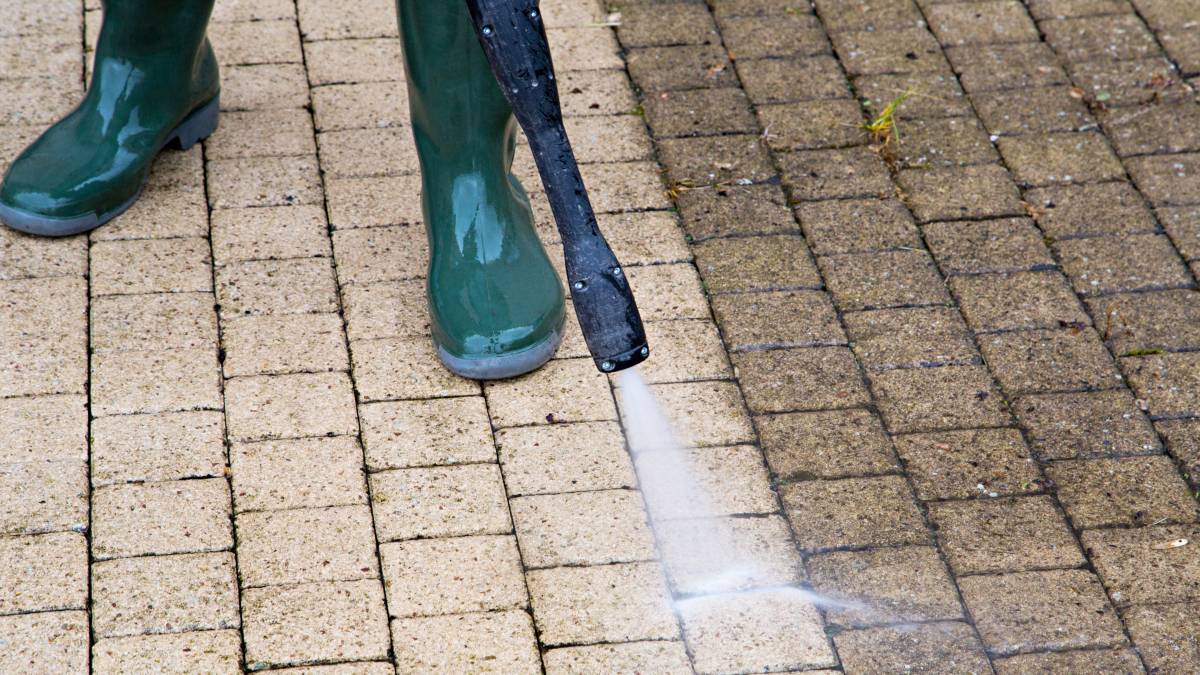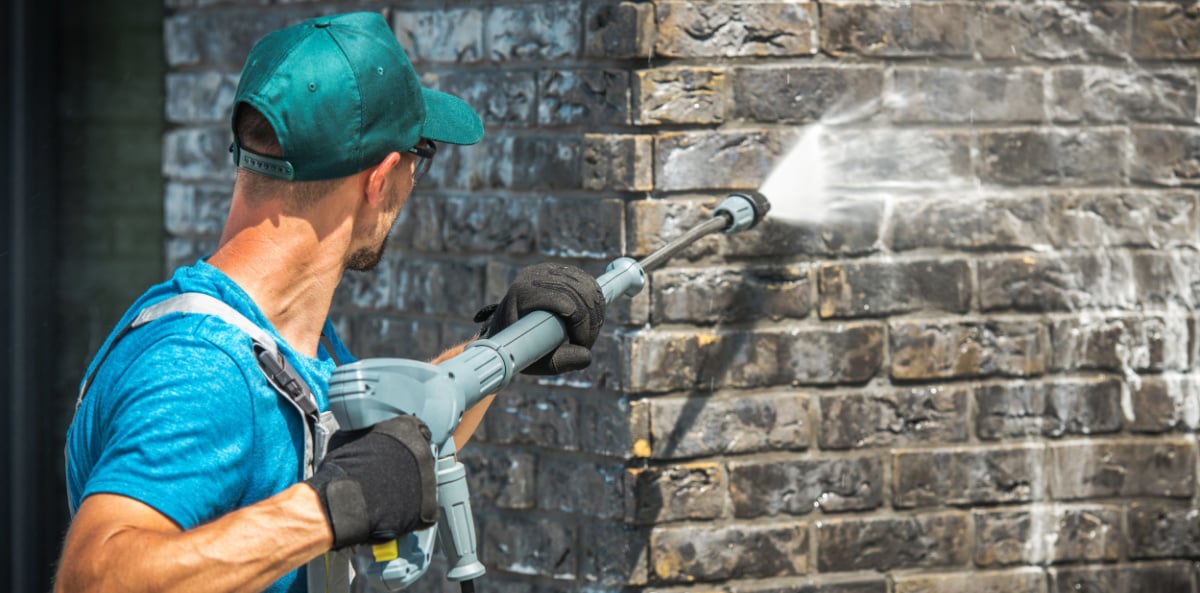Discover Exactly How Pressure Washing Lockhart Handles Hard Discolorations on Any Surface area
Discover Exactly How Pressure Washing Lockhart Handles Hard Discolorations on Any Surface area
Blog Article
Revitalize Your Home: The Ultimate Overview to Stress Washing
Pressure cleaning is an important device for property owners intending to restore the aesthetic allure and longevity of their buildings. To navigate these intricacies and attain optimal results, it is important to check out the essential facets of pressure cleaning, consisting of functional suggestions on resolving common discolorations and ensuring safety and security throughout the process.
Understanding Pressure Laundering
Stress washing is a powerful cleaning technique that makes use of high-pressure water spray to remove dust, grime, mold, and various other impurities from numerous surface areas. This technique is particularly effective on hard surfaces like driveways, sidewalks, decks, and home siding, where standard cleansing approaches might fail. By using customized equipment that generates high-pressure streams of water, pressure washing can penetrate deeply into surfaces, effectively dislodging and getting rid of stubborn particles.
The procedure is not just reliable yet additionally eco-friendly, as it usually counts exclusively on water, minimizing the requirement for extreme chemical cleansers. Furthermore, pressure washing can enhance the visual charm of buildings, keeping their worth and extending the life-span of surfaces by preventing deterioration brought on by impurities.

Selecting the Right Tools
Picking the suitable devices is critical for achieving ideal outcomes in stress cleaning. Gas devices, on the various other hand, offer higher pressure and flow rates, making them excellent for bigger jobs such as cleaning driveways or house siding.
Following, consider the pressure rating, determined in pounds per square inch (PSI) For light-duty tasks, a pressure washing machine with 1,300 to 1,600 PSI suffices, while medium-duty work typically require 1,600 to 2,500 PSI. Durable tasks may require makers surpassing 2,500 PSI.
Furthermore, the circulation price, determined in gallons per minute (GPM), influences cleaning up effectiveness (Pressure Washing Lockhart). A greater GPM enables quicker cleaning however may require much more powerful equipment
Techniques for Reliable Cleansing

The method of overlapping strokes is essential for even insurance coverage. Begin with the leading and work your method down, ensuring that each pass a little overlaps the previous one. This avoids spotting and ensures a detailed clean. In addition, maintaining a constant range from the surface, usually 12 to 18 inches, enables effective application without triggering injury.
Using the proper nozzle is also necessary. A wide-angle nozzle is excellent for bigger locations, while a narrow nozzle can target stubborn dirt or gunk. Using a sweeping movement rather than a stationary spray assists to prevent focused areas of pressure, which might lead to surface damage.

Tackling Common Spots
When it pertains to keeping the look of outside surface areas, attending to typical spots successfully is vital for extending their life expectancy and improving visual appeal. Various surfaces, consisting of concrete, timber, and plastic, can collect spots from organic materials, oils, and toxic wastes, demanding a targeted technique.
For oil spots, a combination of degreasers and stress cleaning can produce outstanding results. Use the degreaser to the discolored area, allowing it to pass through before using a stress washer to remove the deposit. Organic spots, such as mildew or algae, often call for an option including bleach or a dedicated mold and mildew remover, adhered to by stress washing to recover the surface's initial look.
Corrosion spots, generally located on metal surface areas, may necessitate specific rust cleaners. Apply the item and scrub the area before stress washing to eliminate any type of lingering staining. It is very important to check any cleansing solution on a little, inconspicuous area initially to avoid damage.
Safety Tips and Ideal Practices
Guaranteeing safety and security while pressure cleaning is paramount, as the high-pressure water can present substantial risks otherwise handled properly. To safeguard on your own and others, always use appropriate personal safety my company tools (PPE), including security goggles, handwear covers, and sturdy footwear. This equipment will certainly shield you from flying debris and the possibility for injury.
Prior to starting, examine the stress washing machine for any kind of leaks or damaged parts. Acquaint on your own with the tools's manual to comprehend its procedure and safety and security features. Additionally, guarantee the location you are working in is devoid of barriers which any electrical connections are safe from water exposure.
When operating the stress washing machine, keep a secure range from surface areas and stay clear of intending the nozzle at individuals, pets, or fragile objects. Use the appropriate nozzle for the task, as different nozzles create varying spray patterns and pressure levels. Lastly, bear in click here for more info mind your surroundings: secure loose items, expect electric lines, and stay clear of functioning in damp problems that might cause falls or slips.
Final Thought
To conclude, pressure cleaning offers as a crucial tool for homeowners looking for to boost property aesthetic appeals and durability. By understanding the details of tools choice, effective cleansing methods, and common tarnish removal, the potential for renewing one's home comes to be apparent. Additionally, adherence to safety and security procedures ensures a efficient and safe and secure cleaning procedure. Eventually, the knowledge gotten from this guide outfits house owners with the required skills to keep and raise their residential or commercial property's allure and value properly.
Pressure washing is an effective cleansing method that uses high-pressure webpage water spray to get rid of dust, grime, mold, and various other contaminants from different surface areas. By using specialized equipment that generates high-pressure streams of water, pressure cleaning can pass through deeply right into surfaces, efficiently removing and cleaning away persistent particles.
Nonetheless, it is important to comprehend that stress cleaning calls for a particular level of skill and knowledge to avoid harmful surfaces. Softer materials like timber or repainted surface areas necessitate a lower stress establishing to stop damage, whereas concrete or brick surfaces can withstand higher pressure levels.
Organic discolorations, such as mildew or algae, frequently require a solution consisting of bleach or a dedicated mold and mildew remover, adhered to by pressure cleaning to restore the surface area's initial look. - Pressure Washing Lockhart
Report this page